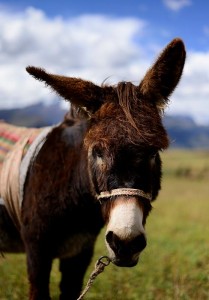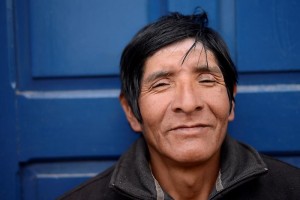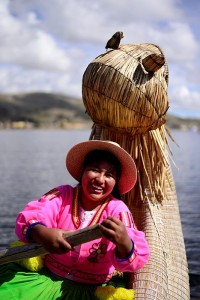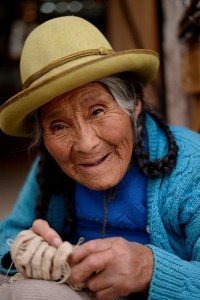I recently started using a different type of lens, which meant a number of good things for my photography. But first a little history…
Since the early days of digital (late 90s for me), I’ve been a big fan of zoom lenses. My first SLR digital camera had only 1.3 megapixels. Capturing so little information, you had to shoot tight because you had so few pixels (information) you could capture. And we needed “fast” lenses (apertures of f/2.8 or lower) because the image quality wasn’t good at high ISOs (like 800). Thankfully, those zooms were just about as sharp as the good fixed focal length (non-zoom) lenses of the time so we didn’t lose any appreciable quality. And they’ve gotten better and better. So I made the move to zoom lenses and haven’t looked back.
 The fastest (wide maximum aperture) zooms today are f/2.8. That’s great for helping you shoot in low light with faster shutter speeds, or giving you more control over shallow depth of field (letting the area in front and behind your subject go out of focus). But there are non-zoom lenses that are even faster, generally down to f/1.4 and occasionally to f/1.2. Those lenses have incredibly shallow depth of field (the eye is in focus but not the tip of the nose), and are usually shot to show that. But you usually pay a lot of money for that faster aperture.
The fastest (wide maximum aperture) zooms today are f/2.8. That’s great for helping you shoot in low light with faster shutter speeds, or giving you more control over shallow depth of field (letting the area in front and behind your subject go out of focus). But there are non-zoom lenses that are even faster, generally down to f/1.4 and occasionally to f/1.2. Those lenses have incredibly shallow depth of field (the eye is in focus but not the tip of the nose), and are usually shot to show that. But you usually pay a lot of money for that faster aperture.
A Nikon 85mm f/1.4 AF-S lens, for instance, sells for about $1700. The 24mm f/1.4 AF-S is $2000. If you’re a pro, or just have the money, those are great lenses. For other people, though, that’s getting expensive. However, there are less pricey options out there as well. The Nikon 85mm f/1.8 AF-S is only $500. That’s about 2/3 of a stop “slower,” (lets less light in) than the 1.4 lens. Remember, full f/stops (1.4, 2.0, 2.8, 4.0, 5.6, 8.0, 11, 16, 22…) mean half (from say f/4 to f/5.6) the light allowed in or twice the light (from f/5.6 to f/4.0). And those premium fast lenses (f/1.4 in this case) are generally higher quality too. But there are some deals to be had.
 Nikon makes a 50mm f/1.4 AF-S lens for “only” $500. And the 1.8 model is just $220. That 50mm 1.8 AF-S is new, too. What’s new is the “AF-S” part. Any Nikon AF-S lens will autofocus on any recent Nikon DSLR body. But not all of Nikon’s lenses are AF-S. If not an “AF-S” lens, then entry-to-intermediate bodies won’t be able to autofocus. These cameras include the D40, D40S, D50, D60, D3000, D3100, D5000 and D5100 (and probably a few others). That’s because in an effort to make the cameras small and less expensive, Nikon didn’t put an AF motor in the body. AF-S lenses don’t need that, as they have their AF motor in the lens. Those are the newer style lenses. And that Nikon 50mm 1.8 AF-S is one of the latest of the new releases of AF-S lenses. So I got one to give it a try.
Nikon makes a 50mm f/1.4 AF-S lens for “only” $500. And the 1.8 model is just $220. That 50mm 1.8 AF-S is new, too. What’s new is the “AF-S” part. Any Nikon AF-S lens will autofocus on any recent Nikon DSLR body. But not all of Nikon’s lenses are AF-S. If not an “AF-S” lens, then entry-to-intermediate bodies won’t be able to autofocus. These cameras include the D40, D40S, D50, D60, D3000, D3100, D5000 and D5100 (and probably a few others). That’s because in an effort to make the cameras small and less expensive, Nikon didn’t put an AF motor in the body. AF-S lenses don’t need that, as they have their AF motor in the lens. Those are the newer style lenses. And that Nikon 50mm 1.8 AF-S is one of the latest of the new releases of AF-S lenses. So I got one to give it a try.
 On the photo trip I just led to Peru, I wanted to go as light as possible. I’m leading a trip to China soon, and both of those trips were going to be weight-restricted. So Peru would be a test for me. My plan was to carry two cameras bodies (Nikon D800 and D7000) and two lenses (Nikon 16-35mm AF-S f/4 VR and 70-200mm AF-S f/2.8 VR). Plus a few small accessories, like a speedlight and filters. But I was nervous about the gap between 35mm and 70mm. So I added the compact 50mm 1.8 AF-S lens to the kit, since it’s tiny and lightweight. And it quickly became one of my favorites.
On the photo trip I just led to Peru, I wanted to go as light as possible. I’m leading a trip to China soon, and both of those trips were going to be weight-restricted. So Peru would be a test for me. My plan was to carry two cameras bodies (Nikon D800 and D7000) and two lenses (Nikon 16-35mm AF-S f/4 VR and 70-200mm AF-S f/2.8 VR). Plus a few small accessories, like a speedlight and filters. But I was nervous about the gap between 35mm and 70mm. So I added the compact 50mm 1.8 AF-S lens to the kit, since it’s tiny and lightweight. And it quickly became one of my favorites.
Using that 50mm lens did two things for me, both of which are good. First, as a “fixed lens (not a zoom), I’d have to think more about my distance to the subject. And thinking in photography often results in good things. Secondly, I’d have a faster aperture (f/1.8) than I’m used to working with, so decided to shoot it only wide open (f/1.8). That meant a different look for those photos, which was also good.
Now shooting a lens wide open in low light is easy. You usually have to do that just to keep a reasonable shutter speed. And we’re used to seeing shallow depth of field in low light. It was outdoors, in sunshine, that the lens became really fun to use. Shallow depth of field with a normal lens isn’t what people expect in bright light. So when I started doing that, the photos looked different. And as I mentioned, in photography, different is often good. That’s because “different” can make a picture unique, and get people to stop and notice. Just look at the cover photo on my business Facebook page. Shot with that 50mm at 1.8, only the llama is sharp, everything else is out of focus: http://www.facebook.com/KCphotographer.
 To shoot a fast lens wide open in bright light, though, requires a combination of low ISO and high shutter speed. Otherwise you risk overexposure. That meant I was usually at ISO 100 (and sometimes 50, or what the D800 calls “L 1.0″), and my shutter speed was usually well above 1/1000. And even when I wasn’t in bright light, having that lens at f/1.8 meant my shutter speed was still fast, lessening the chance of blur.
To shoot a fast lens wide open in bright light, though, requires a combination of low ISO and high shutter speed. Otherwise you risk overexposure. That meant I was usually at ISO 100 (and sometimes 50, or what the D800 calls “L 1.0″), and my shutter speed was usually well above 1/1000. And even when I wasn’t in bright light, having that lens at f/1.8 meant my shutter speed was still fast, lessening the chance of blur.
Downsides? Just one big one. At 1.8 you better be sure you’re in focus, because there’s no depth of field to save you. Check your focus, shoot, check again, shoot more. All you need is one good shot, right?
The lesson I learned from this? Don’t get in a rut. Don’t always use the same lenses the same way. Change things up, try something different. Play, experiment, and most importantly, have fun. After all, if you’re not having fun with your photography, it’s time to find a different hobby.

